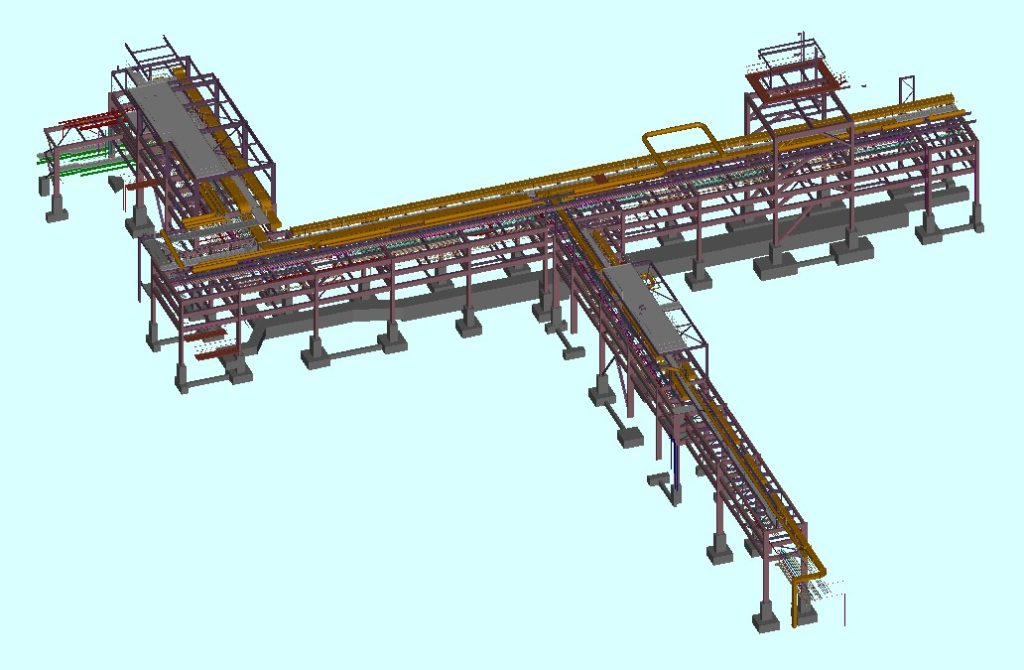In a chemical plant pipes run from one unit to another unit, lines coming from outside facilities etc. The structure which used for these purpose is termed as Piperack. So while preparing the plot plan for a plant one of the most important activity is to plan the piperack through which the piping has to run from one unit to the other.
Generally it is cheaper to run pipes at grade, but only where resulting hindrance to access is unimportant. The arrangement of pipe rack and structures should be given special attention as savings in structural steel and civil costs can often be greater than increased cost due to extra pipe length. Piperack constructionablity (structural or concrete) needs to be freezed at early stage of project in consultation with client & civil . Piping that needs to be free draining or ‘no pocket’ will often dictate the levels for elevated structures.
The following types of Pipe racks may be required:
• Interconnecting/Main piperack (elevated)
• Unit piperack (elevated)
• Pipe track or sleeper way (at grade)
Interconnecting piperacks carry process and utility lines to and from process and utility units. They should not run through process or utility units. Unit racks connect to the main rack taking lines into the respective units via a battery limits station. These racks should be at different elevations to the interconnecting rack.
Unit piperacks are the main arteries carrying the pipes into the units, and as such should be centrally located and are usually elevated. They should be of sufficient height to allow vehicle access beneath. The width of rack will be determined by the number of lines (plus future requirements) it carries, along with any allocation for cable trays.
In off-site areas or where only a few lines are required to run to an isolated plant area it is more cost effective to run pipes on pipe tracks or sleepers, at grade. Sleeper spacing will depend on limiting pipe spans. Sleeper piping is also preferred in off-site area as pipe runs on elevated structure often acts as hindrance for fire protection.
Pipe trenches are used mainly in large off-plot storage areas where pipes need to run at low level and require to pass under plant roads. However use of unfilled open pipe trenches has to be reviewed considering the draining requirement.


Thanks for discussing the following superb subject matter on your web site. I ran into it on google. I am going to check back again once you post additional aricles.
Thanks for the helpful post! I would never have discovered this on my own!